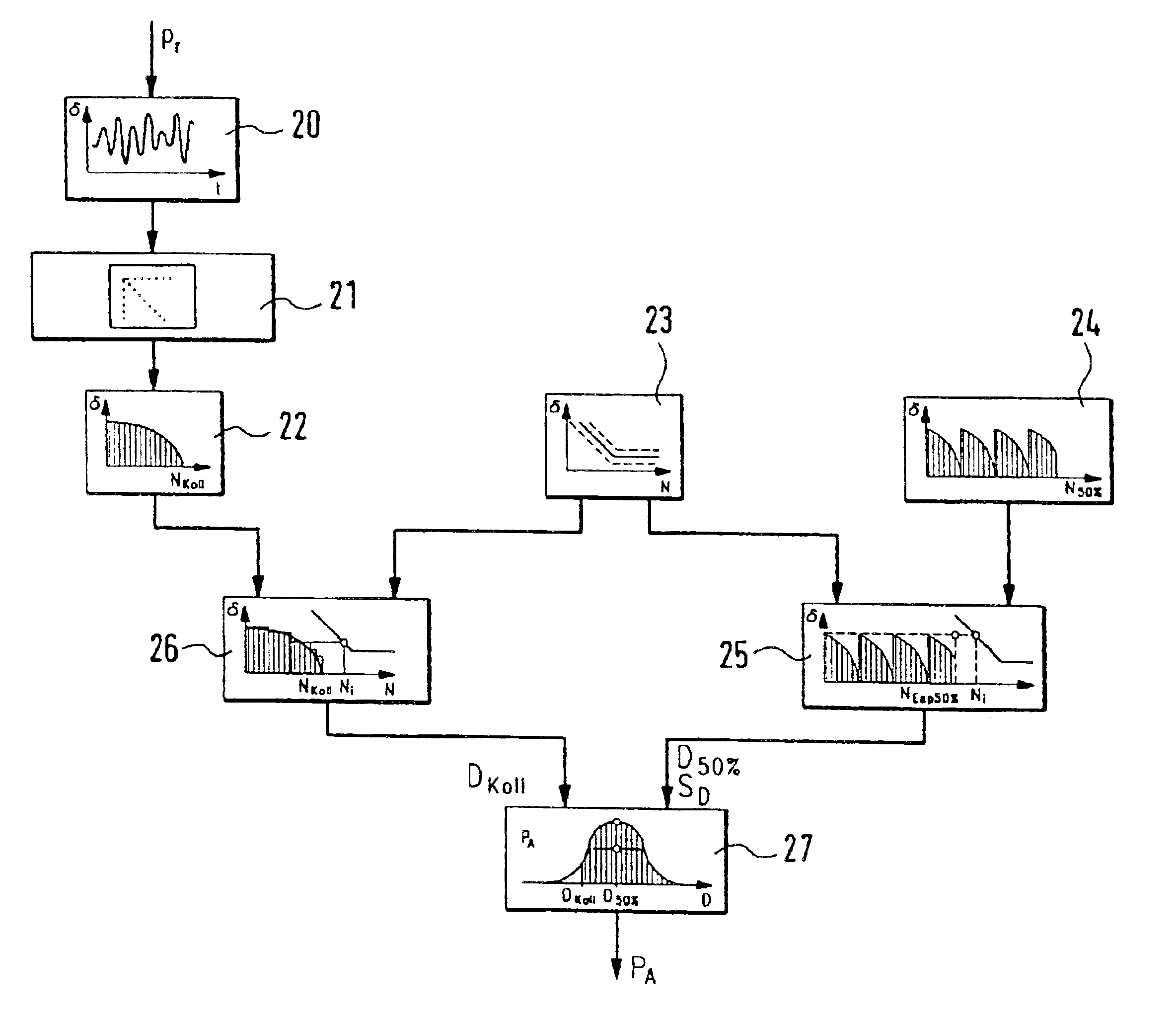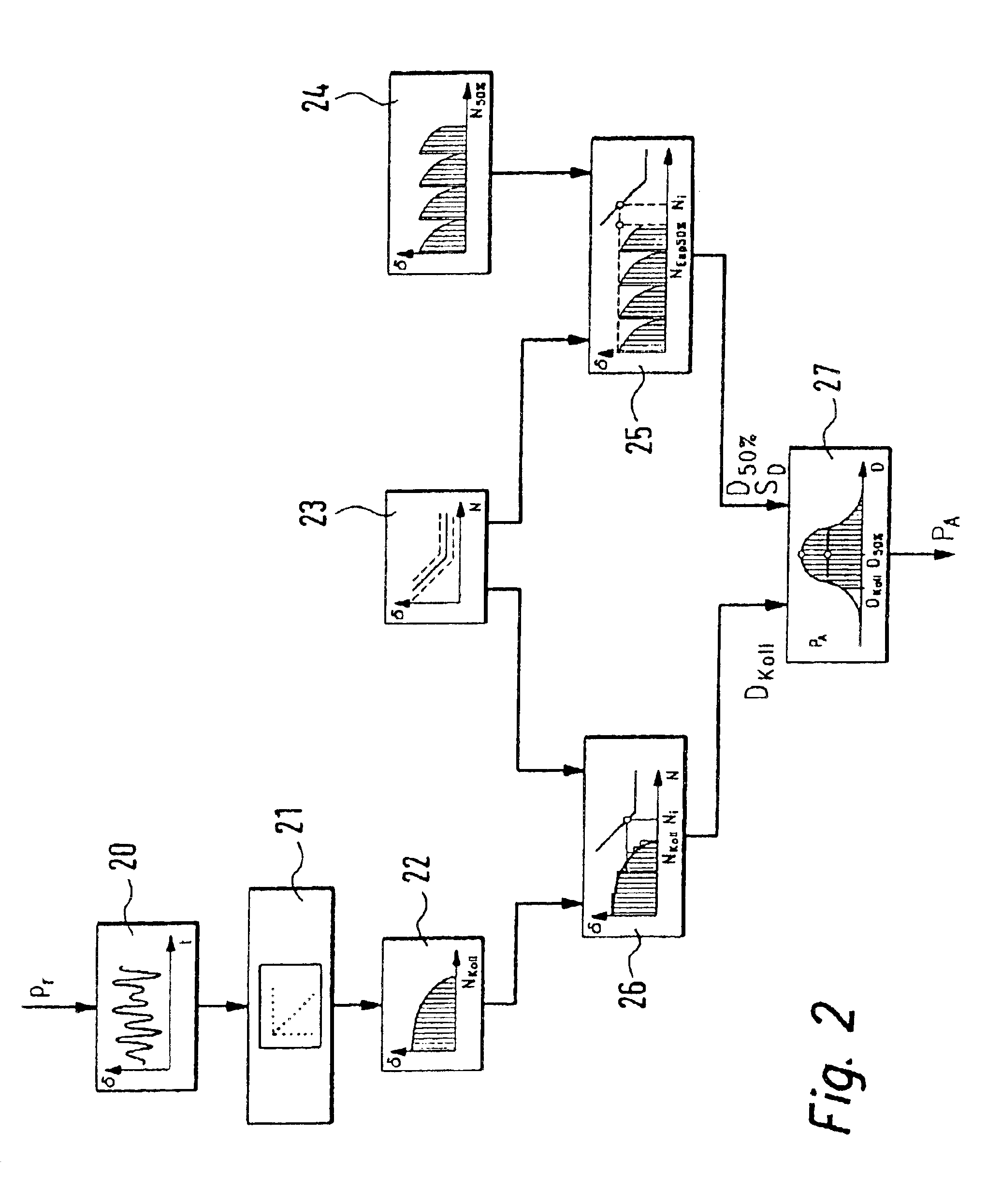Method and control unit for determining the probability of failure of a motor-vehicle component
a technology of motor vehicles and probability determination, applied in the direction of electrical control, instruments, nuclear elements, etc., can solve the problems of no longer designed to be resistant, irregular and rare determination of failure probability, serious material damage and injury to persons, etc., to achieve the effect of fulfilling the function more effectively, reducing weight and cost of components and motor vehicles, and reducing strength
- Summary
- Abstract
- Description
- Claims
- Application Information
AI Technical Summary
Benefits of technology
Problems solved by technology
Method used
Image
Examples
Embodiment Construction
In FIG. 1, a fuel-metering system is designated in its entirety by reference numeral 1. Fuel-metering system 1 includes a fuel reservoir 2, from which a pre-supply pump 3 taking the form of an electric fuel pump transports fuel 4 into a low-pressure region ND of fuel-metering system 1. A high-pressure pump 5 delivers fuel from low-pressure region ND to a high-pressure region HD of fuel-metering system 1. In addition to a housing and a cylinder head of high-pressure pump 5, high-pressure region HD also includes a joint storage strip 6 (or common rail), in which fuel having an injection pressure p_r is contained, and fuel injectors 7 (so-called injectors), through which fuel from common rail 6 is injected at injection pressure p_r into combustion chambers of an internal combustion engine.
Situated in common rail 6 is a pressure sensor 8, which monitors injection pressure p_r and transmits it to a control unit 9 assigned to fuel-metering system 1. Detected pressure value p_r may be firs...
PUM
 Login to View More
Login to View More Abstract
Description
Claims
Application Information
 Login to View More
Login to View More - R&D
- Intellectual Property
- Life Sciences
- Materials
- Tech Scout
- Unparalleled Data Quality
- Higher Quality Content
- 60% Fewer Hallucinations
Browse by: Latest US Patents, China's latest patents, Technical Efficacy Thesaurus, Application Domain, Technology Topic, Popular Technical Reports.
© 2025 PatSnap. All rights reserved.Legal|Privacy policy|Modern Slavery Act Transparency Statement|Sitemap|About US| Contact US: help@patsnap.com



